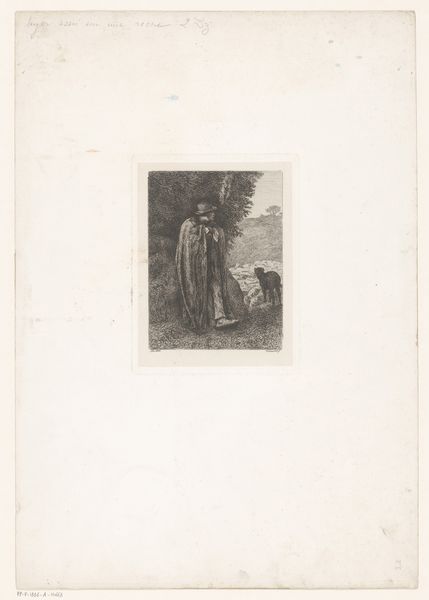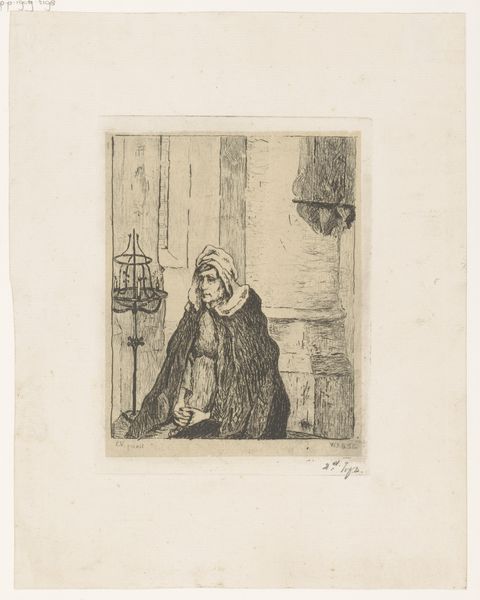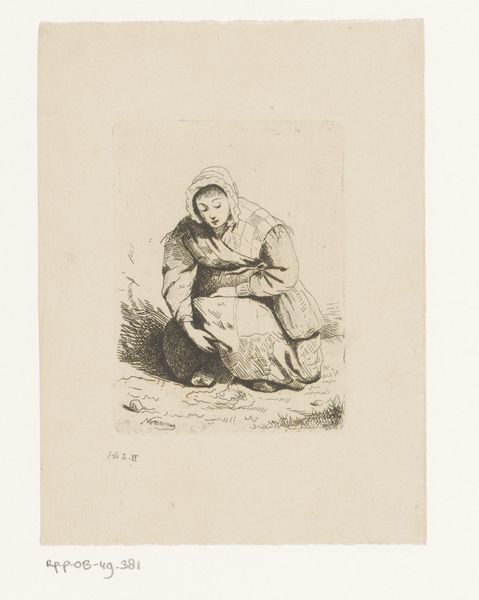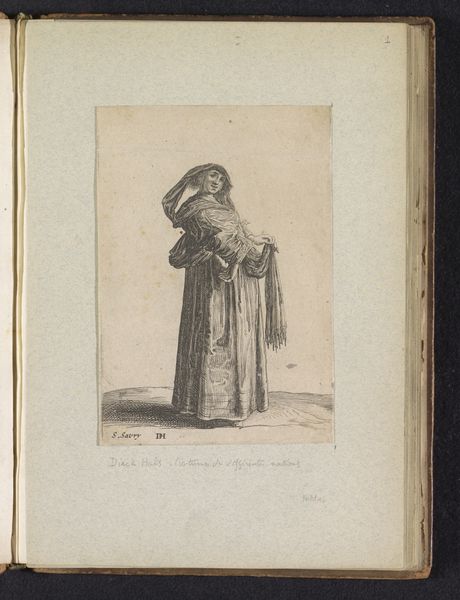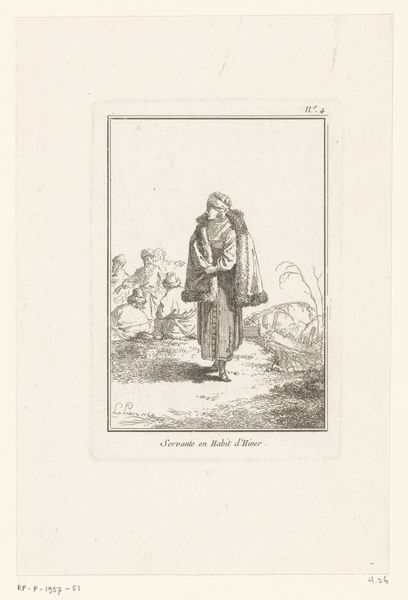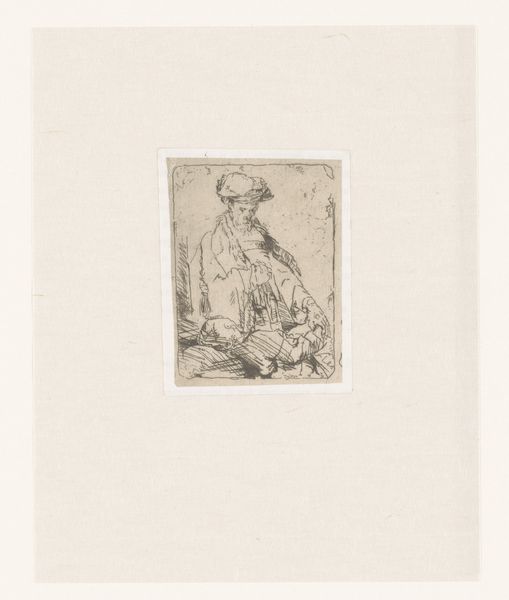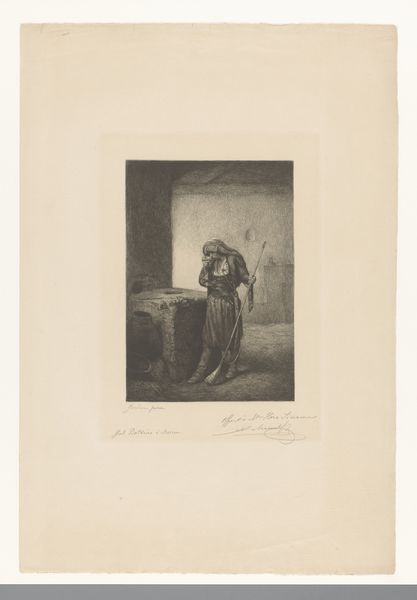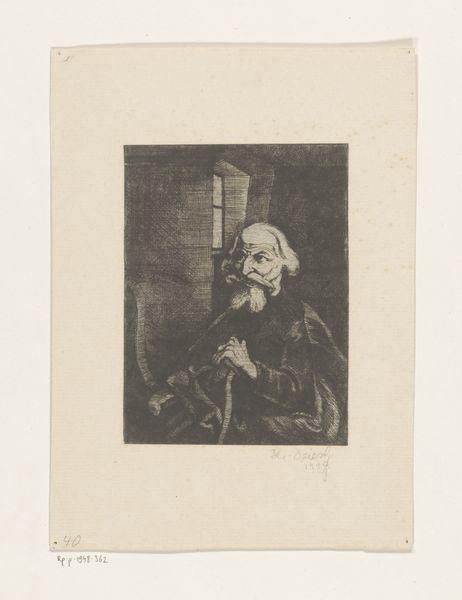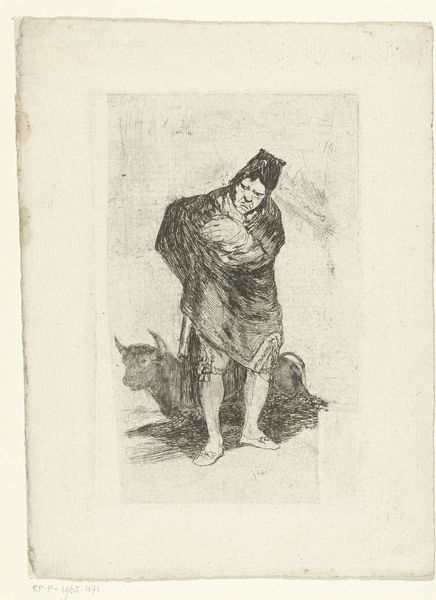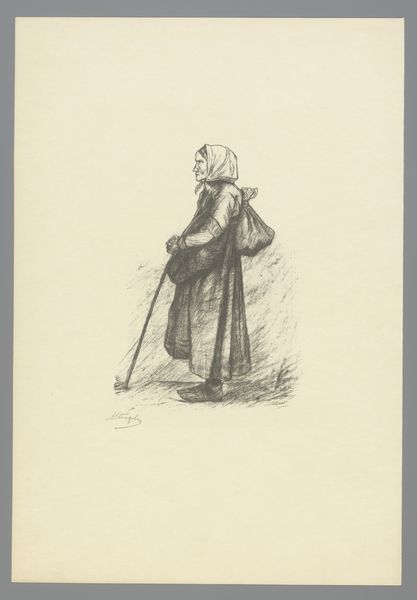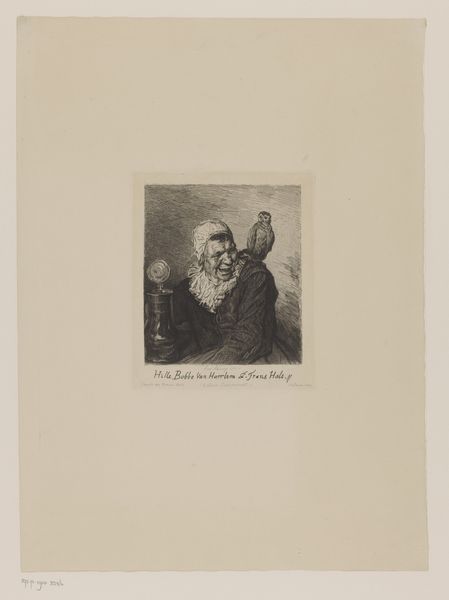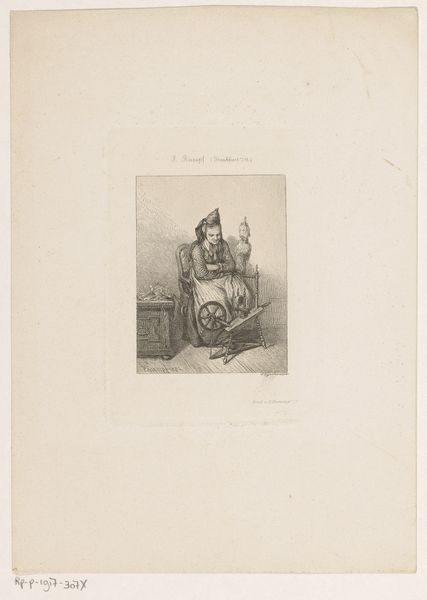
drawing, print, etching, engraving
#
drawing
#
narrative-art
# print
#
etching
#
landscape
#
figuration
#
academic-art
#
engraving
Dimensions: height 208 mm, width 131 mm
Copyright: Rijks Museum: Open Domain
Editor: This is "Vrouw leunend tegen een waterput," or "Woman Leaning Against a Well," by Vicomte Arthur-Jean Le Bailly d'Inghuem, made in 1875. It's an etching, so a print. It gives me a melancholic, even weary feeling. What stands out to you? Curator: That melancholy speaks volumes. D'Inghuem's choice of etching as a medium is significant here. Prints democratized art in the 19th century, making images accessible beyond elite circles. This scene, with its classical figure near a well, nods to historical artistic traditions while also suggesting a commentary on everyday life and perhaps, even the burdens women carried in that era. Notice how the setting, rather sparse, almost isolates her. How does that inform your sense of weariness? Editor: I think the starkness makes it seem like her labor is never-ending. It feels like the well, and whatever responsibilities it represents, is all there is. Was that a common theme at the time? Curator: Representations of women and labor were indeed becoming more prevalent, moving beyond purely allegorical or idealized forms. Artists began engaging with social realities, often depicting women’s connection to domestic tasks. This piece avoids romanticizing rural life; instead, there's an implied realism, an unvarnished view. Do you find her expression contributes to that feeling? Editor: Absolutely. She doesn't look peaceful, more like burdened and thoughtful, even troubled. This has made me consider the artist's potential social commentary, moving beyond the surface beauty of the classical form. Curator: Exactly! That's how the art world evolves – as society reckons with its own values and ideals, those considerations become materialized and challenged within art.
Comments
No comments
Be the first to comment and join the conversation on the ultimate creative platform.
